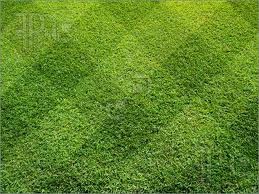Fertilization Approaches Vary
The varying types of soils, lawn standards and grasses require different approaches to lawn fertilization. The ideal program provides for uniform moderate growth throughout the season. Such growth can be provided through fertilization programs that use organic forms of nitrogen.
Problems arise when rates and forms of fertilizer cause irregular “spurts of growth,” especially in spring and summer. Turf that is not fertilized enough has little competitive ability against weeds or disease. Nitrogen recommendations and materials tend to overemphasize the dark green color and fast growth response. In too many cases, this has been detrimental to balanced plant growth and health. For example, much emphasis has been given to early spring as the best time to fertilize bluegrass. If a lawn is stunted and has a pale to yellowish-green appearance, a very moderate feeding at this time would be advisable. On the other hand, fertilizing a lawn that already had moderate vigor at the time most of us get “spring gardening fever” will stimulate excessive succulent growth. The grass becomes more susceptible to fungi, which will take their toll a few weeks later during summer stress. In addition, excessive leaf growth usually occurs at the expense of new root growth, placing the plant at a further disadvantage during summer.
Timing Important for Fertilizing
Lawns should be fertilized at least once a year. Additional fertilization will depend on the desired level of turf appearance, turf grass species, soil type and fertilizer carrier. Other fertilizer applications may be desirable and even necessary. If only one fertilization per year is desired, September is an excellent time for it. When a second application is desired, mid-October is a good time for it. Moderate rates in October or November, after days are cool enough to discourage vigorous leaf growth (50 degrees F), will help prolong green color into the winter and at the same time encourage development of a stronger root system for next spring’s growth.
If a spring fertilization is desired, it should be done in early to mid-April. Two or three fertilizer applications in the fall may eliminate the need for a spring application. When fertilizer is applied at higher rates, give greater attention to thatch- and disease-control measures, as well as to watering.
Mechanical Aeration Essential
Soil sealing and compacting can seriously impair turf growth on clay- or silt-type soils, or any turf receiving constant traffic. Grass roots are injured because air, water and fertilizers cannot reach them in sufficient quantities. Mechanical aeration to break through this barrier is essential for continued turf health. Fertilizer applications following aeration most efficiently provide nutrients to the turf roots. Aeration is best done by power equipment that pulls out small cores of soil, or by cutting vertical grooves to provide openings every three to four 4 inches. Power equipment is usually available at rental stores. Lawn-care companies may also provide this service to their customers. For small areas, suitable hand-equipment is available, but using it is hard work. Even an ordinary spading fork plunged into the soil at three-inch intervals when the soil is lightly moist — not wet — is far better than nothing at all. Aeration should be done at least once a year where compaction is a problem. Early fall is the best time for bluegrass lawns, but aeration will be highly beneficial anytime the grass is actively growing, except possibly during mid-summer heat.
Be Prepared for Cold Weather
Once the ground freezes, be sure to apply mulches to bulbs, perennials and other small plants.
All power equipment should be winterized before storage. Change the oil and lubricate moving parts. Either drain fuel systems or mix a gas-stabilizing additive into the tank. Clean and oil all garden hand tools before storing for winter. The key to good maintenance is doing those things that best counterbalance unfavorable conditions in the lawn environment. To attain equal success, lawns on soils of inferior physical quality or low fertility require more attention than those on deep, friable loam-type soils.
